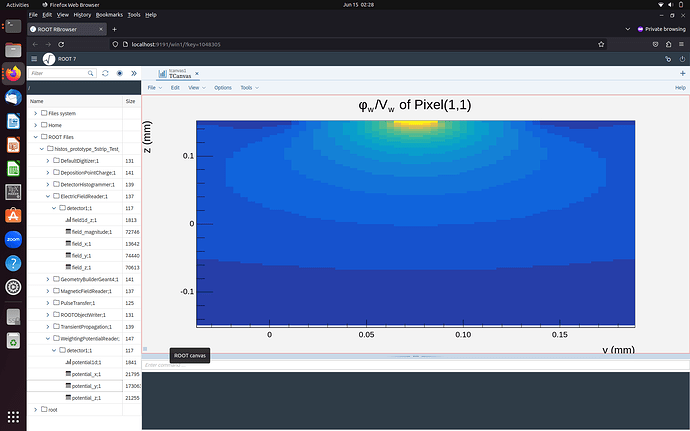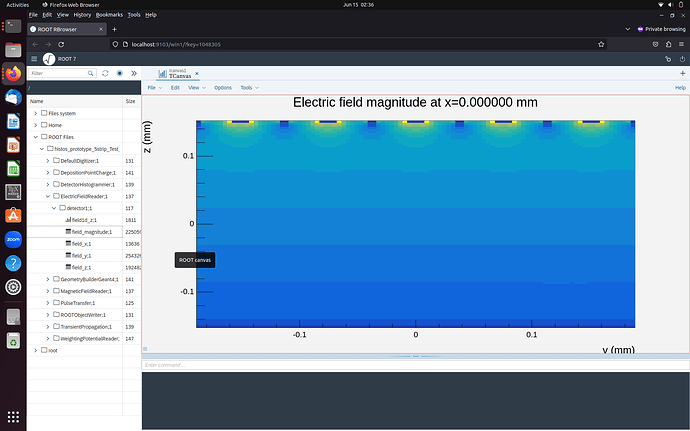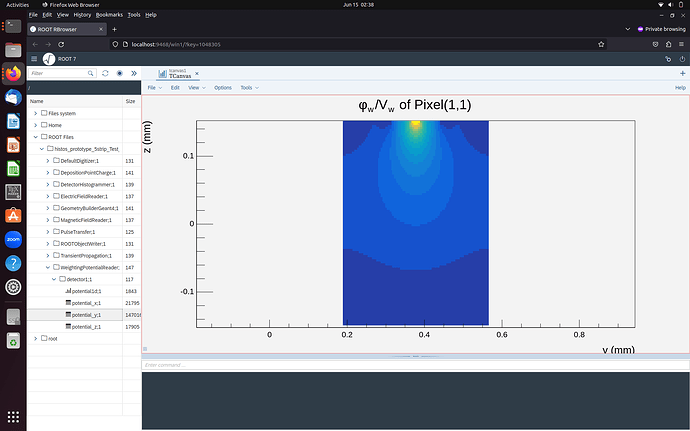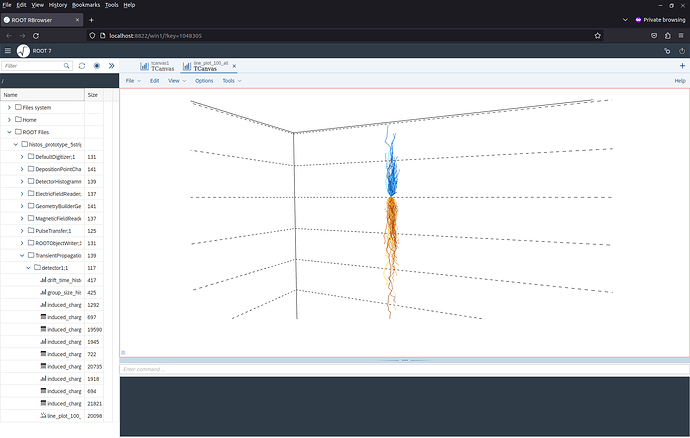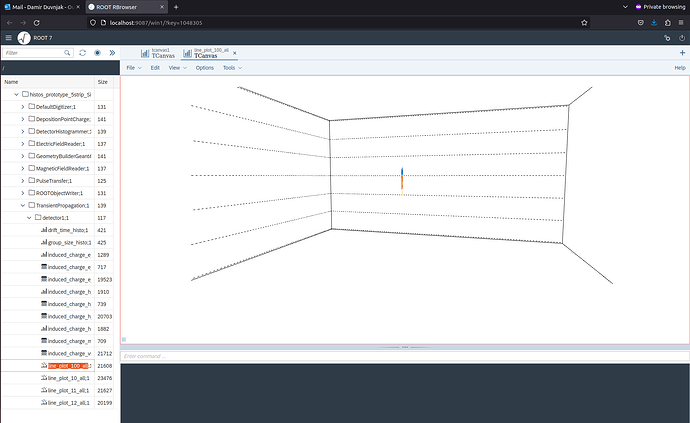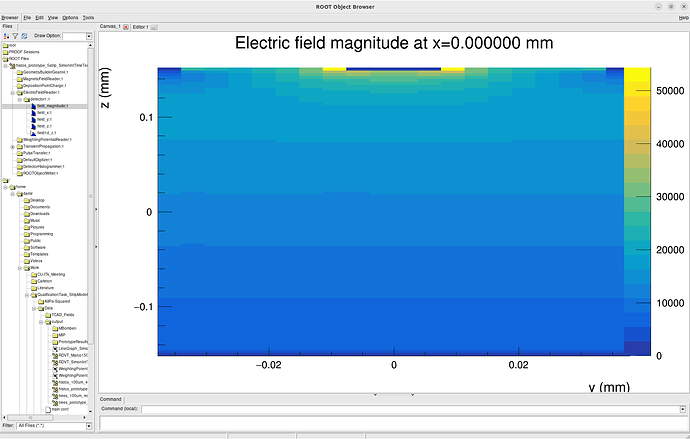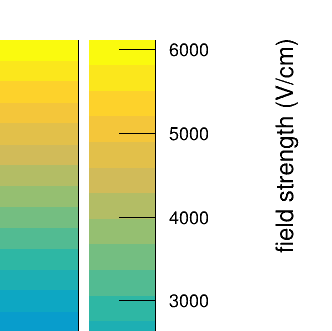Hi everybody,
I’ve been trying to simulate the behaviour of a set of deposited charges, under a TCAD simulated electric field and Ramo potential, as well as a constant magnetic field. I’ve recently updated my simulation to use AllPix v3.0.0, and I’ve encountered some behaviour I don’t understand.
I’m trying to simulate a 2D cross-section of a set of 5 silicon strips, each having a 75.5 micron pitch and 304 micron depth. I’ve implemented this setup into allpix as a very simple custom detector:
detectors_file.conf:
[detector1]
type = “prototype_strip”
position = 0 0 0
orientation = 0rad 0rad 0rad
prototype_strip.conf:
type = “monolithic”
number_of_pixels = 1 5
pixel_size = 1um 75.5um
sensor_thickness = 304um
Both my meshes are 377.5 microns wide and 304 microns deep, and I’d expect allpix to fit them into the above detector without issue, but when I look at the fields in the ElectricFieldReader and WeightingPotentialReader histograms, they look strange:
I’m not sure what’s going on here. The electric field map (top) is only one strip wide, where I’d expect it to be 5 strips wide. The weighting potential is 25 microns wide, which doesn’t match the size of anything, but it’s also offset from 0 by about 8 microns or so? I don’t think that should be happening either.
As an experiement, I changed the prototype_strip.conf file to have just one, 377.5 micron wide pixel:
type = “monolithic”
number_of_pixels = 1 1
pixel_size = 1um 377.5um
sensor_thickness = 304um
This results in more weird behaviour:
Now both fields look like what I’d expect them to, but now the weighting potential is offset and sits to the right of the electric field in the space? Shouldn’t they overlap, and both be centred at 0?
Suffice it to say that both of these setups produce unphysical results. The charge collection efficiency that I calculate from these is something like 1%, and I can’t really think of anything else in my configuration that might be causing such a result.
Cheers,
Damir

